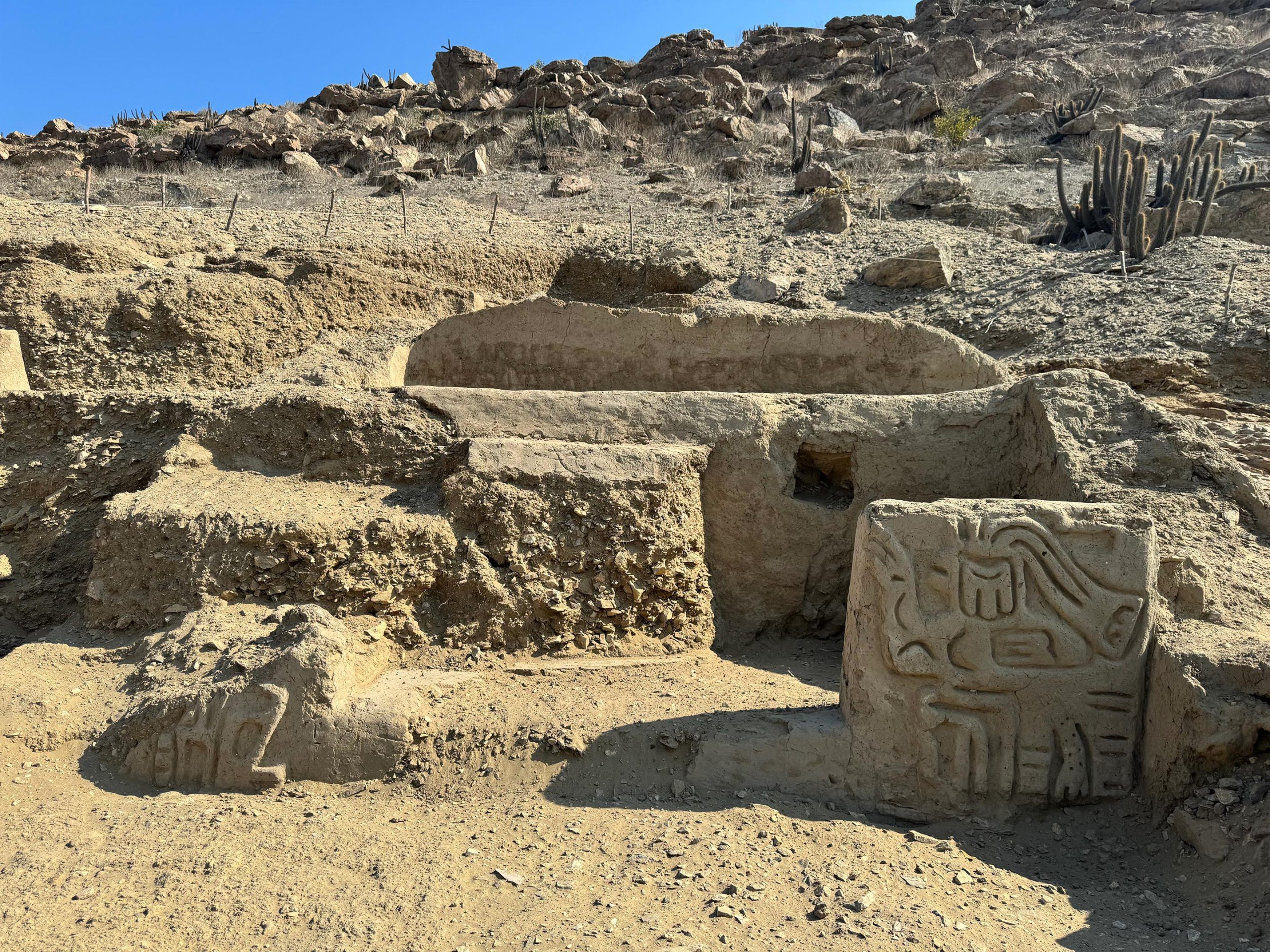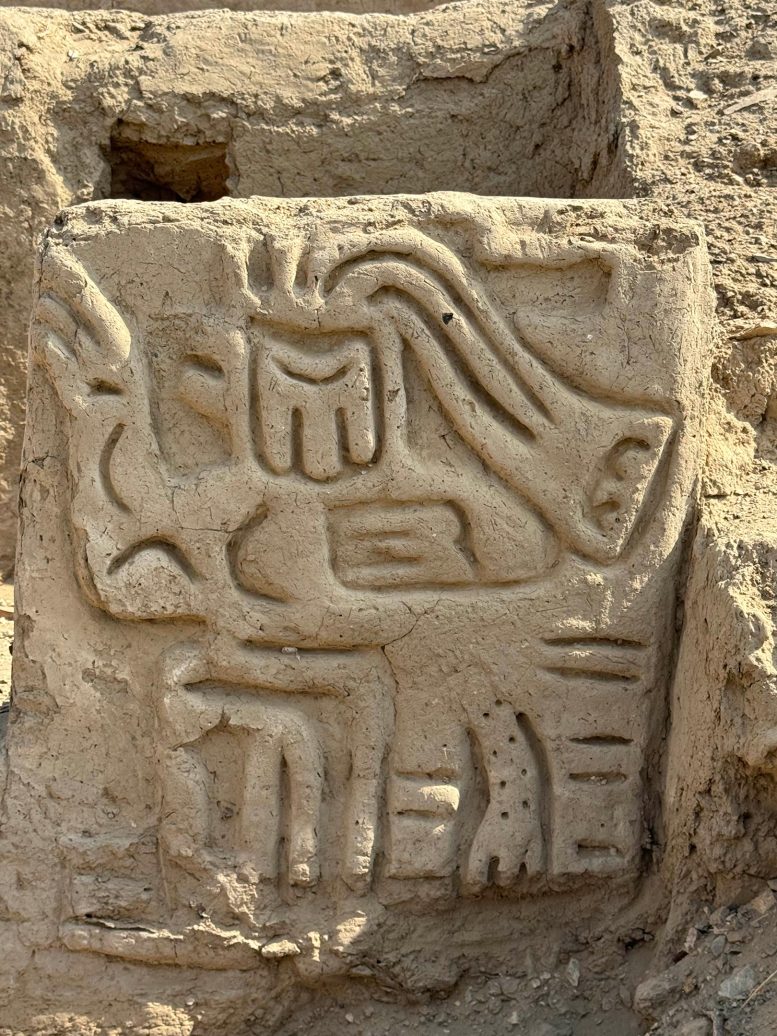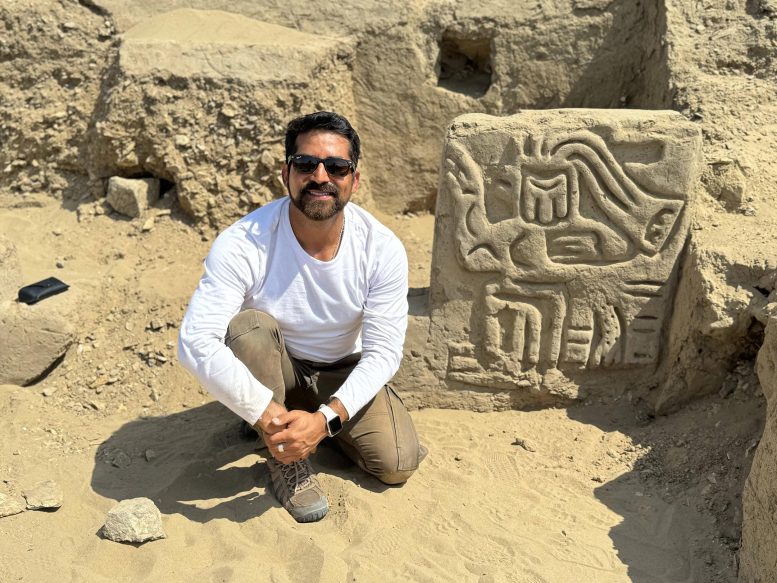A groundbreaking discovery in northern Peru’s Zaña Valley is reshaping our understanding of Andean history. At La Otra Banda, archaeologists have uncovered a massive adobe temple dating back around 4,000 years—centuries before the well-known Chavín culture. This find challenges long-held perceptions and suggests that advanced architectural and ceremonial practices existed in the Andes much earlier than previously thought.
Early Andean Architecture: The Temple at La Otra Banda
The La Otra Banda site, which predates the Chavín civilization, features an expansive adobe structure, complete with carved blocks that once formed the walls of a significant temple. Adobe, made from local clay and straw, was commonly used in Andean architecture due to its ability to withstand the region’s harsh climate. The temple is believed to have served as a central hub for religious and ceremonial activities, indicative of a society that valued spirituality and community cohesion long before the Chavín rise.

This discovery pushes back the timeline for the development of monumental architecture in the region. It signals that ancient Andean cultures were capable of complex urban planning and construction well before the Chavín culture’s famed temples. The site is a testament to the ingenuity of these early societies, who, despite the challenges of their environment, were able to create sophisticated structures.
Rewriting the Timeline of Andean Civilization
The find at La Otra Banda forces a reevaluation of the traditional timeline of Andean civilization. Prior to this discovery, Chavín de Huántar was considered one of the earliest monumental sites in the Andes, flourishing between 1000 and 400 B.C. However, the La Otra Banda temple, dating back approximately 4,000 years, reveals that advanced societal and ceremonial structures were already in place centuries earlier.

This finding shifts the focus from the Chavín as the sole early influencers of Andean culture and highlights the importance of earlier, possibly less-documented civilizations in shaping the region’s history. The discovery of La Otra Banda provides evidence of cultural continuity in the Andes, suggesting that earlier societies laid the foundations for future developments in architecture, spirituality, and social organization.
Implications for Andean Archaeology
The La Otra Banda discovery not only challenges the established historical narrative but also opens new doors for future research in the Zaña Valley. While Chavín culture has long dominated the study of Andean prehistory, sites like La Otra Banda suggest that the Andean highlands were home to complex societies long before the Chavín’s rise.

The site’s excavation may reveal even more about the religious practices and architectural techniques of these early peoples. As more research is conducted, the findings at La Otra Banda could redefine our understanding of the early Andean civilizations and their lasting influence on the region.
Conclusion
The La Otra Banda temple is a significant discovery that reshapes the history of Andean civilization. By revealing an advanced culture predating the Chavín, this find provides a deeper understanding of the region’s early social and architectural developments. As excavations continue, La Otra Banda will likely offer further insights into the ancient societies that once thrived in the Zaña Valley, challenging existing narratives and adding depth to the rich history of Peru’s highlands.

